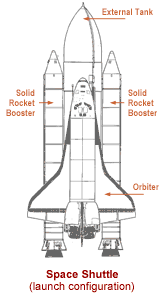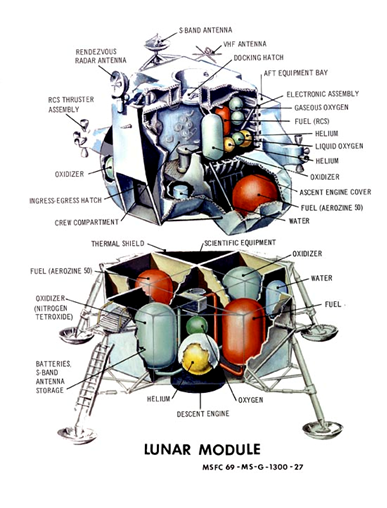Mass & Weight
WARNING: There is often confusion between mass and weight. This is one of those cases where common usage conflicts with the technical definitions.
Mass is a measure of how much “stuff” there is in an object. Really, it’s a measure of an object’s inertia. The more atoms there are, the more mass. Mass is measured in grams or kilograms. The more mass an object has, the harder it is to make it move by pushing on it. It's easier to throw a baseball than it is to throw a bowling ball at the same speed.
Weight is the force of gravity pulling on an object’s mass. Because it is a force, it is measured in force units, newtons (or pounds, if you are a barbarian.)
The reason mass and weight are often confused is that what exerts gravity between two objects (like you and Earth, say) is their masses. Every mass in the universe pulls on every other mass in the universe, and this pull is called gravity. The bigger the masses, the stronger the pull — they are proportional.
The weight depends on two things: (1) how much stuff (mass) there is
for gravity to pull on, and (2) how strong gravity is at that location.
Near the surface of the Earth, each kilogram weighs 9.8 N. In equation
form, this means...
![]()
where g is called the gravitational field strength. Near the
surface of Earth, gravity has a strength of about 9.8 N/kg, but this number
varies slightly from place to place: it's slightly less on tall mountains,
for instance, but we'll take 9.8 N/kg as good enough. If you happen to be on
a different planet, then g is completely different: on Mars g is only 3.7 N/kg;
on the Moon, g is 1.6 N/kg. The gravitational fields of Mars and the Moon are
weaker than Earth's, because they have less mass than Earth. In the clouds
of Jupiter, on the other hand, g is 23.1 N/kg. At the "surface" of
the Sun, it's 270 N/kg! Venus, which has a size and mass very similar to Earth,
has a gravitational field strength at the surface of 8.9 N/kg, almost the same
as Earth's.
EXAMPLE:
If you drop an object, it will fall to the ground. You knew that already,
I’ll bet. Once you let go of it, the only force acting is Fg. From
Newton’s Second Law, its acceleration will be,
![]()
Notice that the units of g, N/kg, are equivalent to m/sec².
![]()
For this reason, g is often called the acceleration due to gravity,
but it’s important for you to remember that the object’s actual acceleration
is equal to g only when NO forces other than gravity are pushing on the object.
1. If you went on a trip to the Moon, what would change about you? Your mass, your weight, both, or neither?
2. What is the weight, in Newtons, of an adult southern Australian koala, with mass of 13 kg?
3. On Earth, former president George W. Bush weighs 850 Newtons. What is his mass?
What would President Bush weigh on Mars?
Read about the Vomit Comet
Additional Activities & Practice
5. At launch, the Space Shuttle's two Solid Rocket Boosters each produce 12,880,000N of thrust. The orbiter's three main engines each produce 1,667,000 N of thrust. The whole stack has a mass of 2,040,000 kg on the launchpad.
(a) Draw a free-body diagram for when the shuttle has just left the launchpad, including the total upward thrust, and the weight.
(b) Calculate the net force.
(c) Calculate the acceleration of the shuttle as it leaves the launchpad.
6. The Lunar Module (LM) used in the Apollo moon landings had two parts. See the picture to the right. The descent stage (the bottom part) was used to carry two astronauts from lunar orbit down to the Moon's surface, and also served as the “launch pad” for the ascent stage (the top part), which carried the astronauts from the surface back up to the command module in orbit for the trip back to Earth. Here's a video showing the lift-off of the ascent stage as the last moon mission, Apollo 17, left. The ascent stage had a mass of 4547 kg at take-off, and its engine provided a thrust of 15,700 N. At the surface of the moon, the gravitational field strength is g=1.62 N/kg, quite different from the Earth’s surface, where g=9.80 N/kg.
(a) Draw a free-body diagram of the LM ascent stage, just after lifting off from the surface of the Moon.
(b) What is the weight of the ascent stage when on the Moon?
(c) What was the net force acting on the ascent stage, the moment after lifting off?
(d) With what acceleration did the LM ascent stage leave the lunar surface?

Image source: NASA (http://spaceflight.nasa.gov/shuttle/reference/basics)
